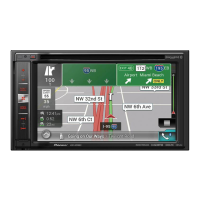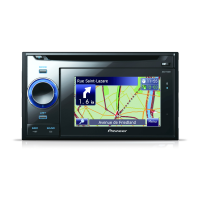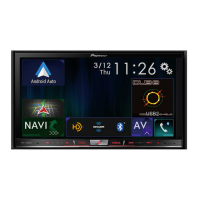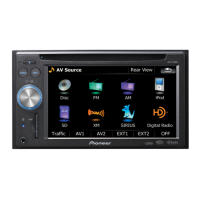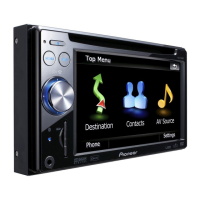Customizing preferences of the navigation Page: 62 Highways Setting to prioritize avoidance of freeways during route calculation.
Period Charge Setting to prioritize avoidance of toll roads with restricted time access.
Per-use Toll Setting to prioritize avoidance of per-use charged toll roads.
“Sound” settings Adjustments for voice guidance volume, alert beeps, and voice prompts.
Verbosity Level Sets the level of detail and frequency of voice guidance instructions.
Alert Points Allows setting specific alerts for points of interest like school zones or crossings.
3 D Terrain Setting to show or hide the 3D elevation of the surrounding terrain.
Track Logs Option to turn on or off saving track logs of journeys.
Place Markers Select which POI icons to display on the map during navigation.
Data Fields Choose values displayed in data fields for navigation or cruising.
Route Progress Bar Option to display a progress bar showing current position along the route.
Signposts Displays lane information similar to road signs on the map.
Junction View Shows a 3D view of complex intersections or freeway exits.
Tunnel View Displays a generic tunnel image instead of the map when driving through tunnels.
“Fuel” settings Enables or disables online gas price option and sets gas type.
System settings Page: 179 Setting AV input Settings for using external video equipment connected via AV input.
GPS Antenna Indicates GPS antenna connection status, sensitivity, and satellite reception.
Installation Indicates whether the product's installation position is correct.
Illumination Indicates the status of vehicle headlights or small lamps.
Back Signal Shows signal switches to High or Low when shift lever is in REVERSE.
iDatalink Indicates iDatalink adapter connection status and version compatibility.
Appendix Page: 227 Troubleshooting Lists common problems with the AV screen, their causes, and solutions.
Error messages Identifies common error messages and suggests corrective actions.
Pandora Lists error messages specific to the Pandora application.
Aha Radio Lists error messages specific to the Aha Radio application.
Disc Troubleshooting messages and causes related to disc playback.
iPod Troubleshooting messages related to iPod connection and firmware.
iTunes tagging Troubleshooting messages specific to iTunes tagging function.
Bluetooth Troubleshooting messages related to Bluetooth module power or connection.
Android Auto Troubleshooting messages for Android Auto startup or connection issues.
MirrorLink Troubleshooting messages related to MirrorLink application loading or connection.
Map matching Describes how map matching corrects vehicle position on the map.
Playable discs Lists the types of DVD-Video and CD discs generally playable on the unit.
Playing DualDisc Information regarding DualDisc compatibility and playback limitations.
Dolby Digital Explains how Dolby Digital signals are processed for stereo output.
Bluetooth Trademarks and logos related to Bluetooth technology.
SDHC Trademark information for SDHC.
WMA;WMV Trademarks for Windows Media Corporation.
DivX Trademark information for DivX.
MirrorLink Trademarks and certification marks for MirrorLink technology.
MIXTRAX Trademark information for MIXTRAX.
Lightning Trademark information for Lightning connector.
App Store Service mark information for the App Store.
iOS Trademark information for iOS.
iTunes Trademark information for iTunes.
MHL Trademarks and certification marks for MHL technology.
Map coverage Details on the map coverage provided by the navigation system.
Phone menu Details the contents and page numbers of the Phone menu.
System menu Details the contents and page numbers of the System menu.
Theme menu Overview of theme customization options like Background, Illumination, and Clock.
Audio menu Lists the contents and page numbers of the Audio menu.
Bluetooth menu Lists the contents and page numbers of the Bluetooth menu.
Specifications Provides detailed technical specifications for the product models.
DVD drive Specifications related to the built-in DVD drive system.
USB Specifications related to USB connectivity and device support.
Bluetooth Specifications related to Bluetooth connectivity.
FM tuner Specifications for the FM tuner on specific models.
AM tuner Specifications for the AM tuner on specific models.




